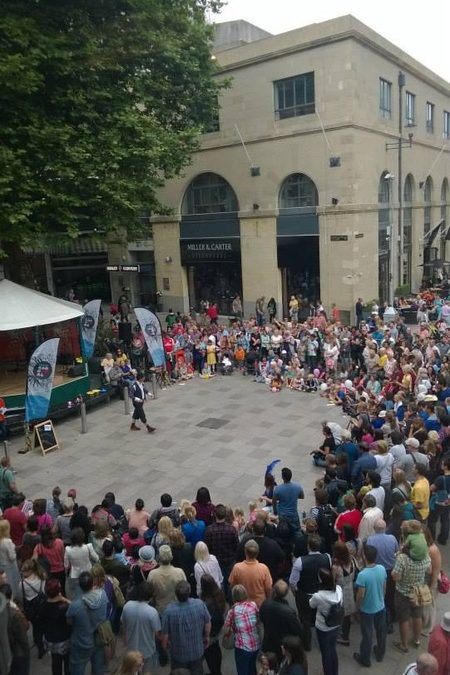Attracting a crowd naturally leads to the middle of your show. The duration of this time is what you choose to create. It is essential what ever we create we do so with the audience in mind.
You see, any one can attract a crowd but to turn that crowd into an audience is skill to be developed and to consider it an art form would be to your advantage. An artist should ask the question “what will my audience see as I perform this show.”
Turning your crowd into an audience needs to be your passion. The central drive to your show as it where. I believe if you focus on just these finer points you will be more than half way to having an exceptional show. Not just a generic show but an exceptional show. To often a show is more about the performer than it is about their audiences.
Regardless if you are performing on the streets or if you are indoors, I have seen too often when an indoor performance has lost their audience attention half way through their performance and it is painful to watch.
One by one the audience are shutting down and drifting out of the reality of the show and into real time. The worse case scenario is when your audience just wants the show to end. I have seen on a number of occasions particularly during the Edinburgh Fringe Festival.
The number one mistake in this case sernario. is the performers serious lack of consideration for what the audience is seeing. There is a saying that Street Theater is the most honest form of theater in the world The saying has being coined into a generic hat line that you are welcome to use. “Ladies and Gentlemen, street theater is indeed the most honest form of theater in the world, it is where you get to see the whole show first then you decide how much it is worth at the end”! Often followed by lots of packaging there after. I do love this line despite the fact it is none specific in reference to how much one should put in (more about that later under hat lines).
What I love about this hat line is 1) it is very old and no one knows who it belongs to. It reminds us that whoever is there at the end of your show – assuming that they are still there at the end, who will judge your performance – your audience will. So you need to create a show whilst asking what will my audience see when I perform. Then you need to be brutal and cut it out if its not needed.
Magicians are often prone to this mistake – I like this trick, I want to do it in my show. Oh, I like this trick as well – its my favorite, I want do that in my show as well – and before you know it the Magician has a long list of magic tricks that he likes. Notice I purposely use the word magic trick because nine times out of ten when a trick is performed solely because the Magician likes it it is void of any real depth or magical experience of shifting a mind set.
It is so different when a master practitioner takes a simple effect and says I love the way this astonishes my audience. I love the way their eyes light up and they are amazed.
Good magic does not have to be complex but it has to be reinforced with your belief in the magical moment, your eyes astonished together with your audience.
Reverting back to the clown within you, wether you are a circus skilled, magic based, acrobatic, mime or clown – creating magic is what theater is all about. We have to create a reason for people to stop, stay and if you are performing on the street – pay at the end.
One of the great modern ways to direct yourself if you don’t have a director is to film yourself. Performing in front of a mirror will not cut it and cutting is something you probably need to do. So, film the show in rehearsal and real time performance. Then watch yourself. It can be painful but be biased when you do this, watch yourself and cut out what does not work.
Far better to have a ten minute good show that can grow than a thirty minute show that does not meet the mark. Far better to have less than more. Hence the old theater saying “less is more.”
Mario Morris

